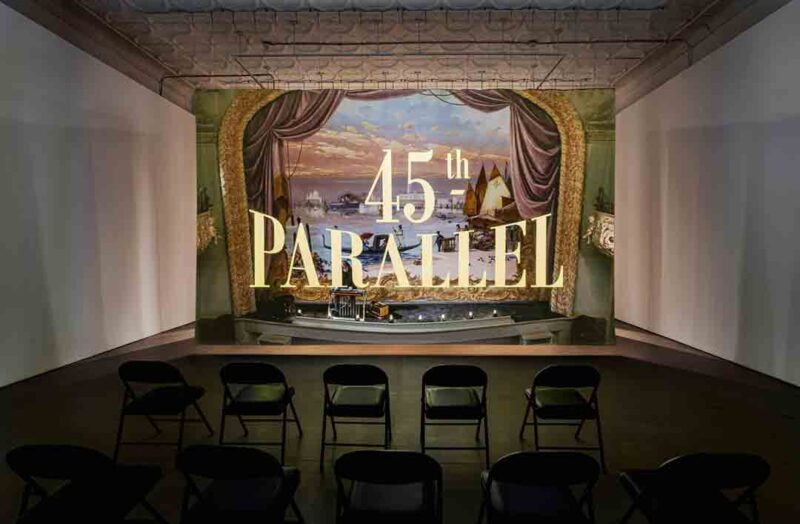[Fall 2022]
By Jill Glessing
Mercer Union, Toronto
26.03.2022 — 4.06.2022
[Excerpt]
Territorial borders function as economic technologies, designed to protect regional resources and wealth. As borders become increasingly porous for transferring capital and goods thanks to globalized free trade agreements, they correspondingly tighten against human migration. The dissolution of the Berlin Wall in 1989 promised more- open borders; instead, they’ve become increasingly “demarcated as well as harder, reinforced, more fortified, and better armored.”1 Today, border infrastructure proliferates: “Over seventy-four border walls currently exist across the globe, most erected over the last two decades.”2 Lebanese-British artist Lawrence Abu Hamdan’s interest in the “embodied violence of the border” manifest in his first Canadian exhibition, the installation 45th Parallel (2022) – presented during the Toronto Biennial of Art – was perhaps inspired by his own border experience; he has lived in Jordan, the UK, and Lebanon, and he currently resides in Dubai…
2 Ibid.
Jill Glessing teaches at Ryerson University and writes on visual arts and culture.
[ Complete issue, in print and digital version, available here: Ciel variable 121 – WANDERINGS ]
[ Complete article and more images, in digital version, available here: Lawrence Abu Hamdan, 45th Parallel — Jill Glessing ]

